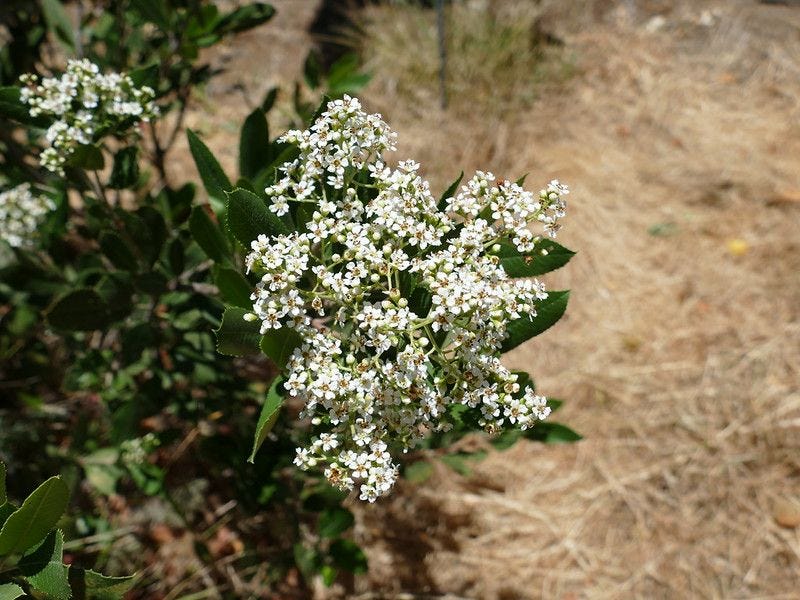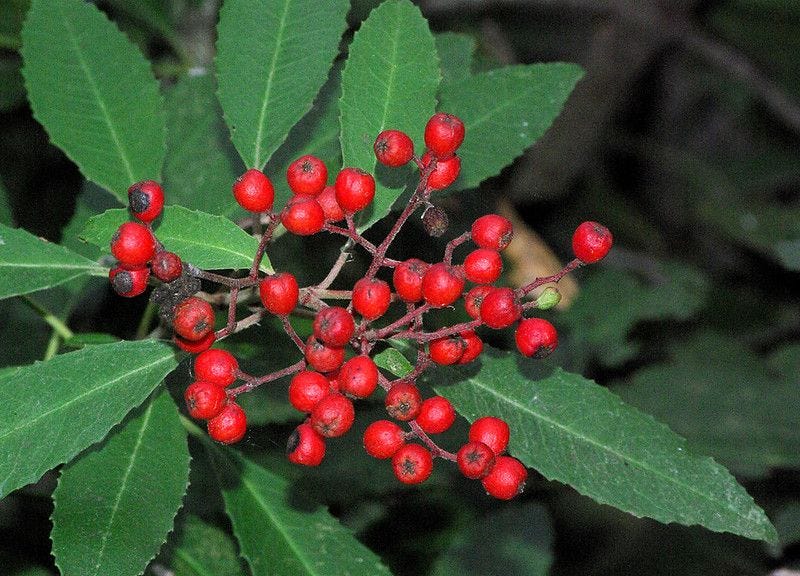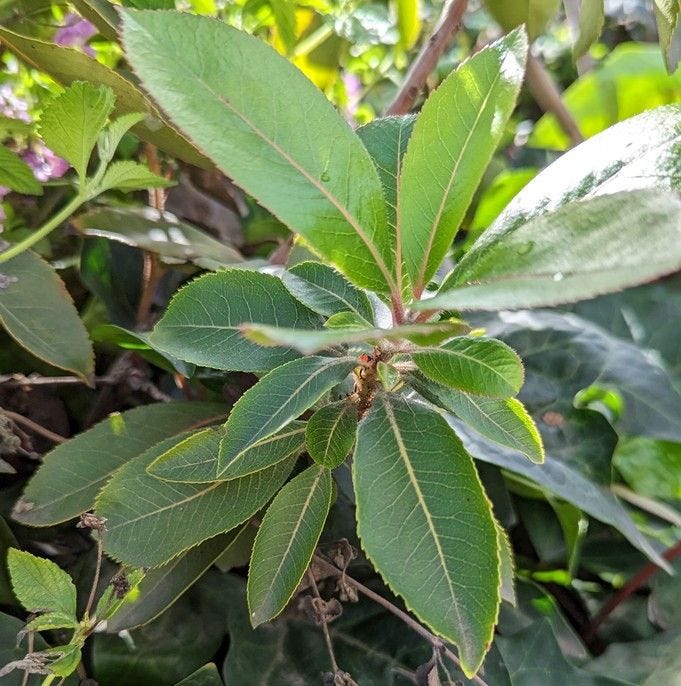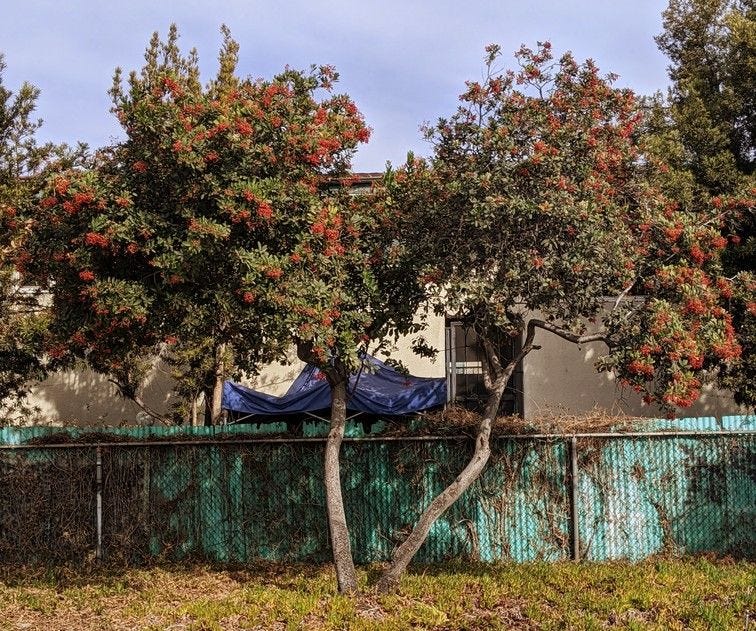
Heteromeles arbutifolia is a California native shrub commonly known as Toyon. The name "Toyon" is derived from the Ohlone people who lived in Northern California before Spanish colonization. At one time though, this plant was called Christmas Berry, due to its similarity to Holly (both plants have red berries in Winter). When early settlers explored the hills above the early settlement of Los Angeles, groves of these shrubs were discovered and mistaken for holly, giving rise to the name "Hollywoodland" which we all now know as Hollywood. Toyon quickly became popular as a source of cuttings for Christmas wreathes in Los Angeles during the early 20th century.
Appearance
Toyon is a large shrub that can grow up to 25ft (7.5m) tall and 15ft (4.5m) wide, although typically this will grow to about 10ft (3m) high in a garden setting. It is an evergreen plant with tough leaves that rarely fall from the plant. Lower branches can be cut back to the trunk, making this a very suitable candidate as a patio tree for small spaces.
In Summer, small white flowers start to show that later become red berries in Winter.

Toyon is not fussy about soil conditions, but it does prefer dry soil in the summer months. Toyon can grow in full shade or sun. When grown in a shady position, it tends to be taller with less dense foliage as it stretches to reach the sun. The leaves are waxy and tough with slightly serrated edges, very similar to a Madrone (Arbutus) Tree (the botanical name "arbutifolia" translates from Latin as "leaves like Arbutus").
How to Grow
Toyon can be difficult to grow from seed so most Toyons are cultivated from cuttings. Toyon is a fast-growing shrub that can easily reach 6ft (2m) in 2 years after planting a seedling.
As is common with California native plants, Toyon is remarkably drought tolerant. It has a deep and wide-spreading root system. It grows naturally in the chaparral habitat of California, which is a common source of fuel for wildfires. Toyon is easily burnt down but has adapted to the wildfire regime by re-sprouting from its burnt stump. This means that if you want to remove a toyon, you will need to remove the root-ball from the ground completely. This re-sprouting is not always consistent and the shrub is more susceptible to pathogens in this state so this is not a recommended way to prune the plant. Regular pruning cuts can be made year-round, but aggressive pruning is best done in the Autumn months. Toyon easily recovers from damage, making this shrub suitable for commercial landscapes.
Toyon thrives in nutrient-poor soil and requires no fertilizer but does benefit from a light spreading of compost around its base. Sun is required for Toyon to flower and produce berries. Specimens growing in the shade will only have berries at the top of the shrub where it can reach the sun.
The berries of Toyon are a food source for many birds and the branches are sturdy enough to support their weight but too light for predators, making this a great choice for a wildlife garden.

When grown in the sun and away from the coast, this shrub will have dense foliage and is not susceptible to leaf blight, making it a good choice for use as a hedge. Better airflow is needed when grown in coastal areas, which will require pruning to thin out the foliage. Toyon is hardy to -12C (10F) while also tolerating temperatures above 40C (100F).
Toyon is a very versatile plant for garden designers. It can be used as a background shrub, it can be espaliered to a wall, used as a small tree, or planted in mass for use as a hedge.
Cultivars
Heteromeles arbutifolia "Davis Gold" is a cultivar selected by the Agriculture faculty of the University of California. This version differs from the straight species with its smoother leaves and yellow (gold) berries.
Hardiness
Heteromeles arbutifolia is hardy to USDA zones 7-11, Sunset Zones 5-9, 14-24. Prefers reduced watering in summer.








